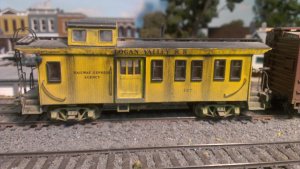Trains 140 years ago when cabooses became widely used were only 10 cars in length...often less. A caboose was both a refuge and a working platform for larger crews than we have today. The caboose offered a safe and practical place from which to observe the train's behavior in the variations of track conditions as the consist moved from station to station. When trains became 12,000 tons and 200 cars long, the caboose was still able to offer excellent visibility of about 20 cars ahead, especially on curves. The other 180 cars were in 'dark' territory perpetually. A serious derailment 110 cars ahead of the caboose was just as undetectable to the caboose denizens as it would have been for those in the cab up front.
As dieselization made large crews somewhat unnecessary, and the technology came on line to operate distributed power in those mile-plus long consists, the caboose became just another car, but carrying nothing of particular value any more...especially when the crews could justifiably be pared down to two or three people, all of whom could enjoy each other's company in the spacious cabs up at the head end. Just another car out of many scores, yes, but also one that had to be cleaned and maintained....costs. For railroads working on marginal rates and profits over the post-war period, cabooses became something of a luxury.


